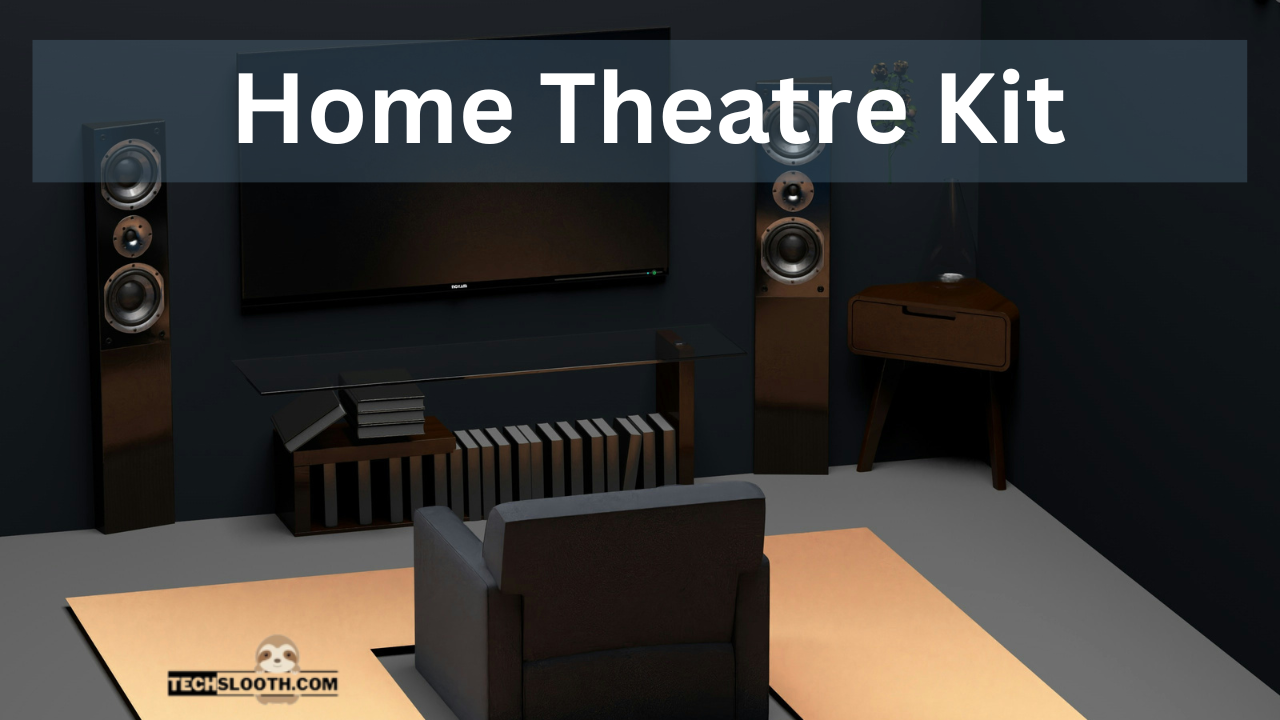Home Theatre Kit are designed to provide an immersive viewing and listening experience. An inexpensive home theater system may consist of just a 32-inch LED/LCD TV and a soundbar or a home theater in a box. It takes more than slapping a large TV on the wall and calling it a day to set up a killer home theater system. You must consider the primary media source, available space, budget, specs, and main purpose. Don’t worry if that seems overwhelming.
You have several options to choose from depending on your budget and preferences. A home theater can be as high-end as you’d expect from Hollywood’s A-list film directors or as affordable as a spare bedroom while being incredibly impressive. Your home theater becomes an investment in happiness when you consider all the connectivity options available (such as how you can easily stream content or turn every room into a music room). If you’re planning a home theater setup, here is what you must consider.
Creating a Home Theater Room
An appropriate video display device (TV or projector) depends on the size and type of room. You should also consider these questions regardless of how large or small your room is:
- Ambient light levels: how much is there? Ambient light can cause glare or reflection on TV screens. A video projector’s picture may appear drab when exposed to ambient light.
- Does the room have carpeting? The distribution of sound, especially bass, varies based on this factor. A hard floor can produce unwanted echoes and uneven bass due to its greater reflective properties. Audio artifacts are absorbed better by carpeted floors.
- In terms of wall construction, what type do you have? Unlike wood paneling, drywall is less reflective but can still cause vibrations. There may be a need for acoustic treatments to reduce vibrations.
- Will your home theater system be housed in a cabinet or closet? Place your components according to the look you want for the room.
- What will you do with the speakers? Will they be placed inside the room, on the wall, or the ceiling? Depending on the acoustics of the room and the most popular surround sound formats, ceiling or in-wall speakers may be more practical.
- How far away from the screen will you be sitting? Screen size determines how well the visual experience will be.
Projector or TV?
Screens play a crucial role in the Home Theatre Kit experience. You have the following options:
- A TV with 720p, 1080p, or 4K Ultra HD resolution. You can choose from LED/LCD or OLED TVs. Screen sizes over 40 inches are rarely available in 720p and 1080p TVs. Above that size, the most common option is 4K Ultra HD.
- Combining a video projector with a screen. Big-screen viewing is possible with video projectors. In the same way as with TVs, you can choose from 720p, 1080p, and 4K. For small rooms, there are also short-throw projectors. It is essential to make the room as dark as possible when you set up a projector.
Projectors display primarily on a wall screen, while televisions can be mounted on various stands. The screen should be placed at eye level. They can weigh as much as 130 pounds and have a width of up to 48 inches (sometimes more). The majority of them are at couch-level height.
Subwoofers!
Audio has depth and a sense of encompassing by adding low-frequency notes (bass) from the subwoofer. Subwoofers make the audio sound heavier and give the audio a fuller feel. There are some HTIB sets that include subwoofers, but there are some that do not, so this should be taken into consideration.
If you buy a subwoofer, you must consider the space it will be used in. People living in apartments should consider scaling down the size of their sub to avoid residual complaints since the sound is a non-localized signal.
If you want to deck out your home theater, a 7.1-channel system offers incredible sound distribution and many options. If you’re shopping for individual home theater components, you should know the difference between bookshelf speakers and floor-standing speakers.
Standing speakers are typically placed in the front, and bookshelf speakers in the rear channels. For a low-profile, enveloping audio experience, ceiling-mounted or in-wall speakers are also available for sound systems with more channels.
Related Article: Can You Facetime Someone Who Blocked You?
Home Theatre Receivers
Receivers are an integral part of the best sound system. All the elements are connected between the input channels (media sources) and output channels (speakers) to ensure the audio is distributed correctly. There are a few things to consider when choosing a receiver for multi-speaker home theater systems (other than sound bar setups).
You must consider the input quantity if you intend to use multiple inputs for your surround sound receiver. To be happy with your setup, cover all the audio bases by choosing a receiver with Bluetooth connectivity, multiple HDMI inputs, audio auxiliaries, and so on. Another factor to consider when shopping for a receiver is whether you plan on pumping audio into multiple rooms throughout your house.
Accessory items
Regarding home theater systems, there aren’t too many additional accessories that need to be purchased separately from what’s included. A TV bracket and HDMI cable are two of the most common accessories. You must consider the size of the TV and the distance from the media center to the TV or receiver. There are some exceptions to this rule, such as multi-room audio systems, which require additional speaker wires.
For those curious about getting into home theater audio/video, there is a large rabbit hole waiting to be explored.
Control options via remote
A universal remote can make life easier since each component has its own remote, which can be confusing. Apps can also be downloaded onto your phone to control your Home Theatre Kit. Several apps work with multiple brands and models of products, while others are specific to a specific brand. With Amazon Echo and Google Home smart speakers, you can also control your smart home with Alexa or Google Assistant.
An overview of the Source Components
A home theater is worthless if you can’t watch movies or listen to music through it. This is a list of the source components you will need:
- Video player for DVDs: To get the best possible image on an HDTV, make sure the standalone DVD player has progressive scan and upscaling capabilities.
- DVD player with Blu-ray capabilities: Blu-ray players play high-definition content. As well as playing DVDs and audio CDs, it can also play standard DVDs.
- Blu-ray player that plays Ultra HD discs: An Ultra HD Blu-ray Disc player is another source component you should consider if you have a 4K Ultra HD TV. These players display Ultra HD Blu-ray discs in true 4K resolution on an Ultra HD TV. They also play standard Blu-rays and DVDs and provide upscaling to 4K.
- CD player: A standalone CD player may not be necessary since all DVD, Blu-ray, and Ultra HD Blu-ray players can play CDs.
- Disc turntable: A phono/turntable input is available on many home theater receivers, thanks to the resurgence in vinyl records’ popularity.
- Optical/cable/satellite antennas: How you will receive your primary TV programming needs to be determined. Consider combining your cable or satellite service with a DVR if you subscribe to those services.
- Streaming device for the Internet: You can watch movies online using a media streamer like Roku with high-speed internet access. Netflix, VUDU, Amazon, and Hulu are among the services that Blu-ray Disc players and smart TVs can access via the internet.
- Video/DVD recorders: You can connect your VCR to your home theater system (especially if it is a HiFi Stereo unit). It is possible to include a DVD recorder or a DVD recorder and VCR combination. The device is becoming rarer, so grab one while you can.
Conclusion of Home Theatre Kit
Planning a home theater involves avoiding some common mistakes. Ensure that the components of your Home Theatre Kit are compatible before you build it. As well as measuring your room in advance, ensure it has enough space for everything you need. Before rearranging the room, determine how much it will cost to make structural adjustments.
Consider hiring a professional Home Theatre Kit installer if you get too far over your head or are planning a high-end custom home theater. Keeping your budget in mind, the installer can suggest which components or installation options work best in your room environment.
Hi, I am Ellis Ross, the Admin, and Writer of Techslooth. I have over 5 years of experience in social media and tech-related writing. I write well-researched, detailed, tested, and simple methods to assist users in understanding technology and social media apps. The majority of my articles are how-to guides for various digital platforms and tools, such as the Android and iPhone operating systems, as well as various social networks and mobile apps.

